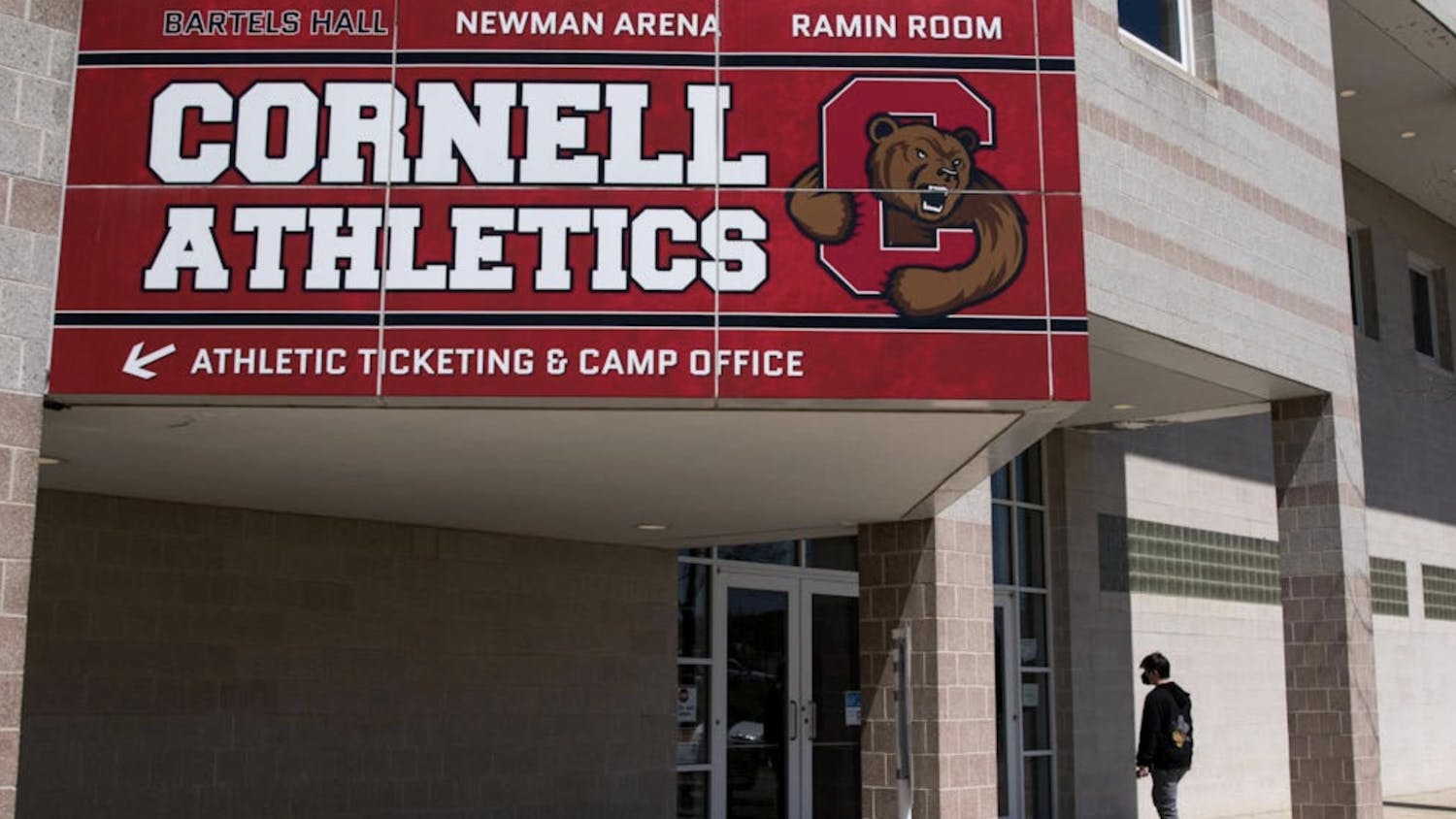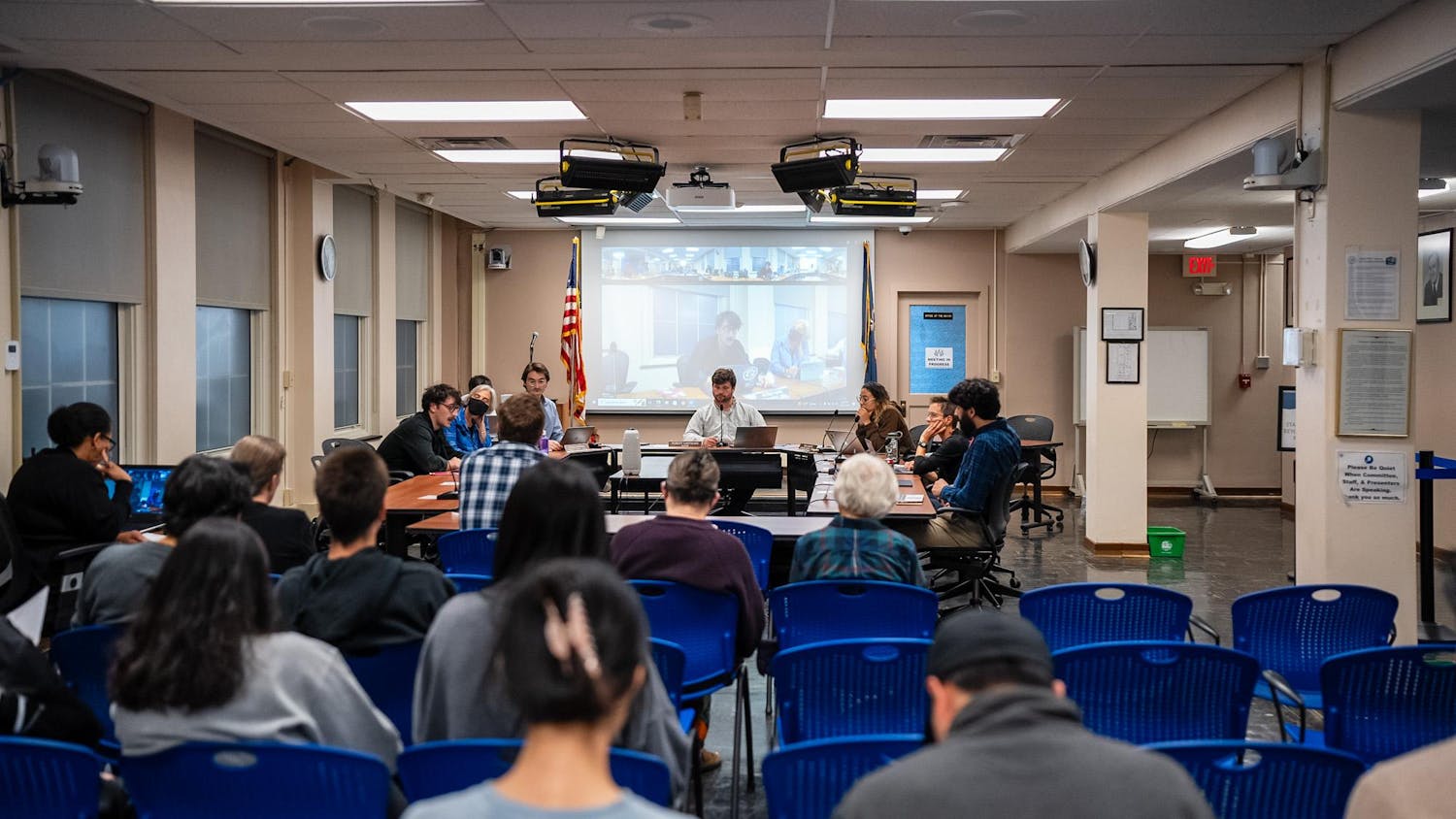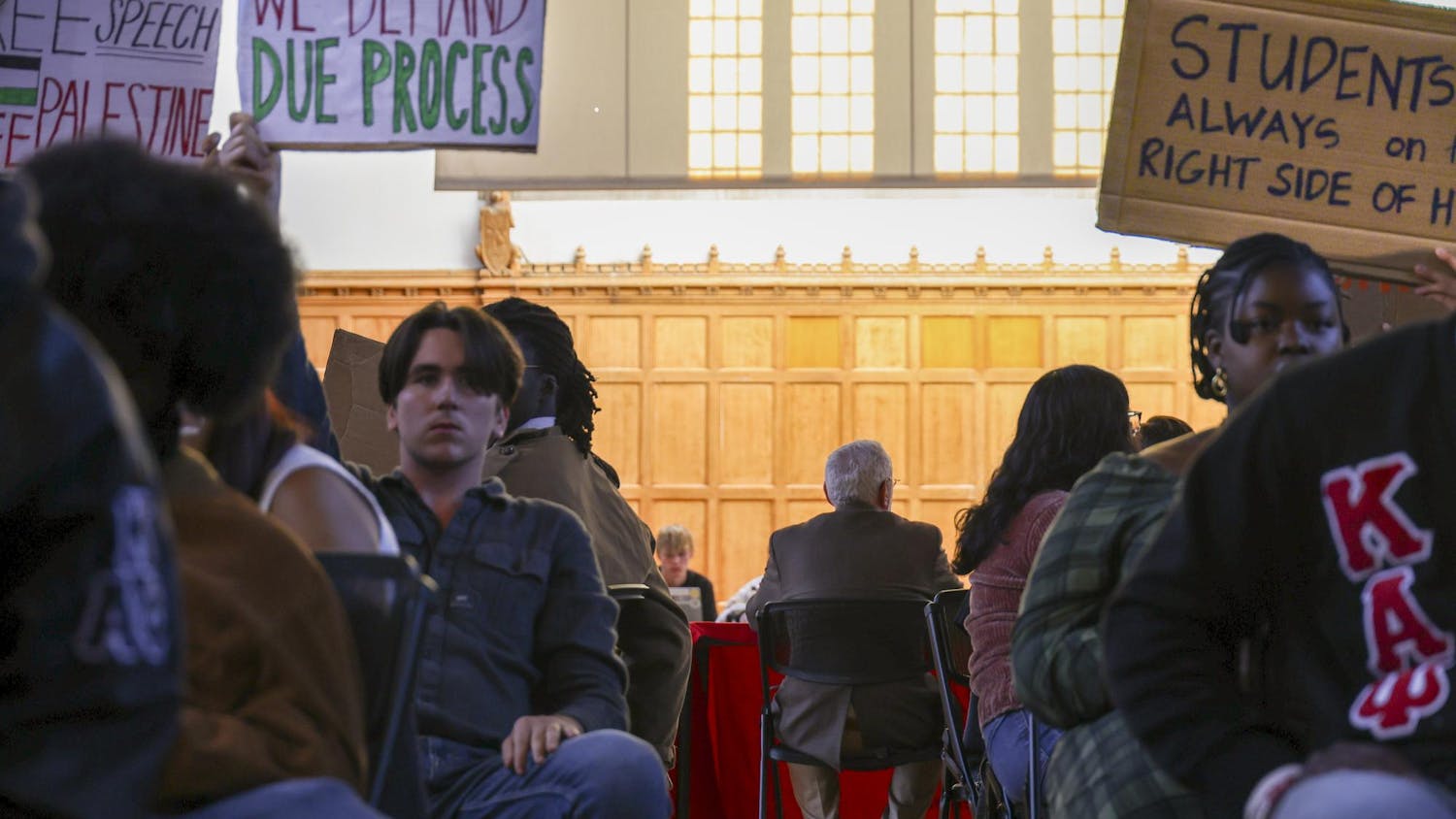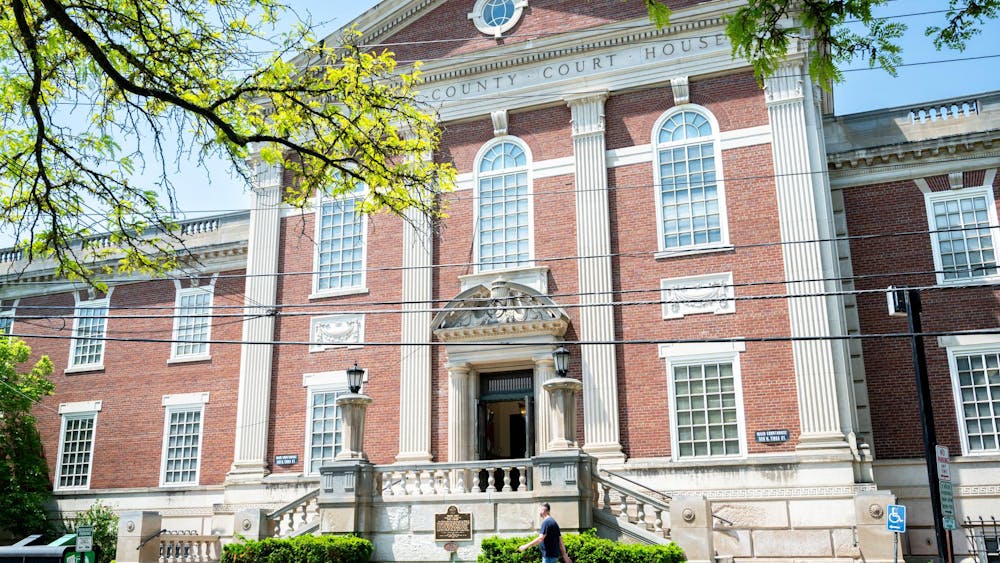For over a decade, touch-and-go construction has defined McGraw Hall. Its latest construction plan — a $110 million renovation project that will renew the building’s interior — is set to begin in January.
In the months before the building’s three-year construction period begins, students and faculty have been preparing their transition to new spaces while also trying to maintain normal operations in the building.
Construction Impacts
The archaeology, anthropology and history departments’ faculty offices and labs will move out of McGraw at the end of the semester into temporary spaces in the Mary Ann Wood building on West Campus, Stimson Hall and Olin Library.
All physical objects in the anthropology and archaeology collections will move to the newly constructed Anthropology Collaboratory in Olin Library, set to open in January, according to Warren Petrofsky, associate dean of administration in the College of Arts and Sciences.
Prof. Adam Smith, anthropology, said that while “packing and moving are never fun,” the new facilities in Olin and McGraw will enhance capacities for archaeological research, teaching and work on campus.
While a line of fencing has surrounded the perimeter of McGraw throughout the Fall 2024 semester, by January, the entirety of McGraw will be enclosed with similar fencing to protect the public from construction site safety hazards.
As the affected departments, faculty and students adjust to these changes, graduate student Sarah Orsinger said that the biggest problem for many archaeology students has been trying to access materials in collections for research.
“We’re trying to use the materials in the collections, but at the same time it has to get packed up,” Orsinger said. “A lot of professors have to uproot their offices, and a lot of people don’t really know where they’re being moved to yet either, which makes it hard, because it’s like ‘Oh, I have this resource for you, but I don’t quite know when you’ll be able to get it.’”
Orsinger spoke about a fellow graduate student who wanted to access materials for a class he currently TAs for, but would not be able to access the materials until May since items are currently packed away.
“Thankfully, what I’m doing for research doesn’t require a lot of stuff in those collections, but for students that it does require, you’re kind of on a waiting period just to even get your hands on it, which is annoying,” Orsinger said.
Sana Ghauri ’27 said that due to the construction, the seating in her archaeology class in the Landscapes and Objects Lab is partially obstructed.
“The seating is kind of interesting in the classroom because there are these poles, and so you have to kind of arrange the desks around them,” Ghauri said. “It’s annoying, but it’s not too bad.”
McGraw’s Outdated Infrastructure
Although construction has brought inconveniences, students also reported issues with the building’s old and updated infrastructure.
For instance, Annabelle Behnke ’27 said that the current old heating and cooling system in McGraw is often disruptive to her anthropology class.
Behnke said that during her class, the classroom gets very warm, but students have a hard time hearing each other when the air conditioning unit in the window is turned on, causing them to intermittently turn the AC on and off every ten to fifteen minutes.
“It’s kind of this never-ending cycle that kind of interrupts the flow of class and discussion, which is a little bit frustrating,” Behnke said.
Brando Sell ’25 recalled a unique classroom environment in McGraw that felt like a “dungeon complete with bars on the windows.”
“There was this one [classroom] in the McGraw basement. It had [this] kind of raw stone walls. There were skeletons of various animals and human skulls on the wall,” Sell said. “It was for an anthropology class about American education, and I found it very funny that we were talking about, you know, issues in 21st-century teaching just next to these like skulls of lemurs.”
A Decade of Construction
The third-oldest building on campus, McGraw Hall opened its doors in 1872 and is one of three original stone buildings on the Arts Quad. The other two stone buildings, Morrill Hall and White Hall, have both previously been renovated — Morrill in 1973 and White in 2003.
The initial announcement of the preservation project came in April 2011, after sections of the building’s ceilings collapsed in two faculty offices and one hallway back in 2009. While the University started the renovation in May 2011, exterior steel supports on the building remained up indefinitely due to a lack of funding from the University to continue with the project.
Seven years later in March 2018, it was announced that McGraw Hall’s construction plan would be brought back in motion, but the COVID-19 pandemic forced design to pause halfway through. The effort was resumed four years later in November 2022, when McGraw Hall was finally scheduled for interior renovations. The design process was completed last spring.
The renovation plans on adding modern building systems such as elevators, bathrooms, heating and ventilation strengthen the exterior walls and repair stonework.
Sell said that he hopes the renovation maintains the character of the building.
“I really hope they maintain some of those beautiful staircases. There’s some really gorgeous historic details in there,” Sell said. “I just think it would be a shame to completely modernize the inside. Like we can keep some history, you know?”
Correction, Oct. 11, 2:30 p.m.: A previous version of this article incorrectly described some of the construction timeline.
Correction, Oct. 11, 10:30 a.m.: A previous version of this article incorrectly attributed Prof. Adam Smith’s, anthropology, quote.

Grace Liu is a member of the Class of 2027 in the College of Arts and Sciences. She is a senior writer for the News department and can be reached at gliu@cornellsun.com.











